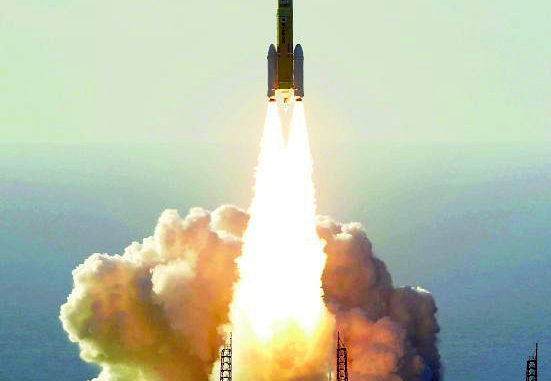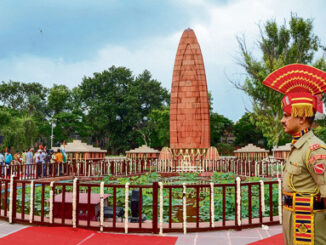
Tokyo (TIP): A Japanese spacecraft is nearing Earth after a yearlong journey home from a distant asteroid with soil samples and data that could provide clues to the origins of the solar system, a space agency official said on Friday.
The Hayabusa2 spacecraft left the asteroid Ryugu, about 300 million kilometers (180 million miles) from Earth, a year ago and is expected to reach Earth and drop a capsule containing the precious samples in southern Australia on December 6. Scientists at the Japan Aerospace Exploration Agency believe the samples, especially those taken from under the asteroid’s surface, contain valuable data unaffected by space radiation and other environmental factors.
Makoto Yoshikawa, a Hayabusa2 project mission manager, said scientists are especially interested in analyzing organic materials in the Ryugu soil samples.
“Organic materials are origins of life on Earth, but we still don(asterisk)t know where they came from,” Yoshikawa said. “We are hoping to find clues to the origin of life on Earth by analyzing details of the organic materials brought back by Hayabusa2.” JAXA, the space agency, plans to drop the capsule containing the samples onto a remote, sparsely populated area in Australia from 220,000 kilometres (136,700 miles) away in space, a big challenge requiring precision control. The capsule, protected by a heat shield, will turn into a fireball during re-entry in the atmosphere at 200 kilometers (125 miles) above ground.
At about 10 kilometers (6 miles) above ground, a parachute will open to prepare for landing, and beacon signals will be transmitted to indicate its location.
JAXA staff have set up satellite dishes at several locations in the target area to catch the signals, while also preparing marine radar, drones and helicopters to assist in the search and retrieval mission.
Without those measures, a search for the pan-shaped capsule with a diameter of 40 centimeters (15 inches) “would be an extremely difficult,” Yoshikawa told reporters.
For Hayabusa2, it’s not the end of the mission it started in 2014. After dropping the capsule, it will return to space and head to another distant small asteroid called 1998KY26 on a journey slated to take 10 years.
Hayabusa2 touched down on Ryugu twice, despite its extremely rocky surface, and successfully collected data and samples during the 1½ years after it arrived there in June 2018. In the first touchdown in February 2019, it collected surface dust samples. In July, it collected underground samples from the asteroid for the first time in space history after landing in a crater that it had earlier created by blasting the asteroid’s surface.
Scientists said there are traces of carbon and organic matter in the asteroid soil samples. JAXA hopes to find clues to how the materials are distributed in the solar system and are related to life on Earth.
Asteroids, which orbit the sun but are much smaller than planets, are among the oldest objects in the solar system and therefore may help explain how Earth evolved.
It took the spacecraft 3½ years to arrive at Ryugu, but the journey home was much shorter because of the current locations of Ryugu and Earth. Ryugu in Japanese means “Dragon Palace,” the name of a sea-bottom castle in a Japanese folk tale. — AP





Be the first to comment